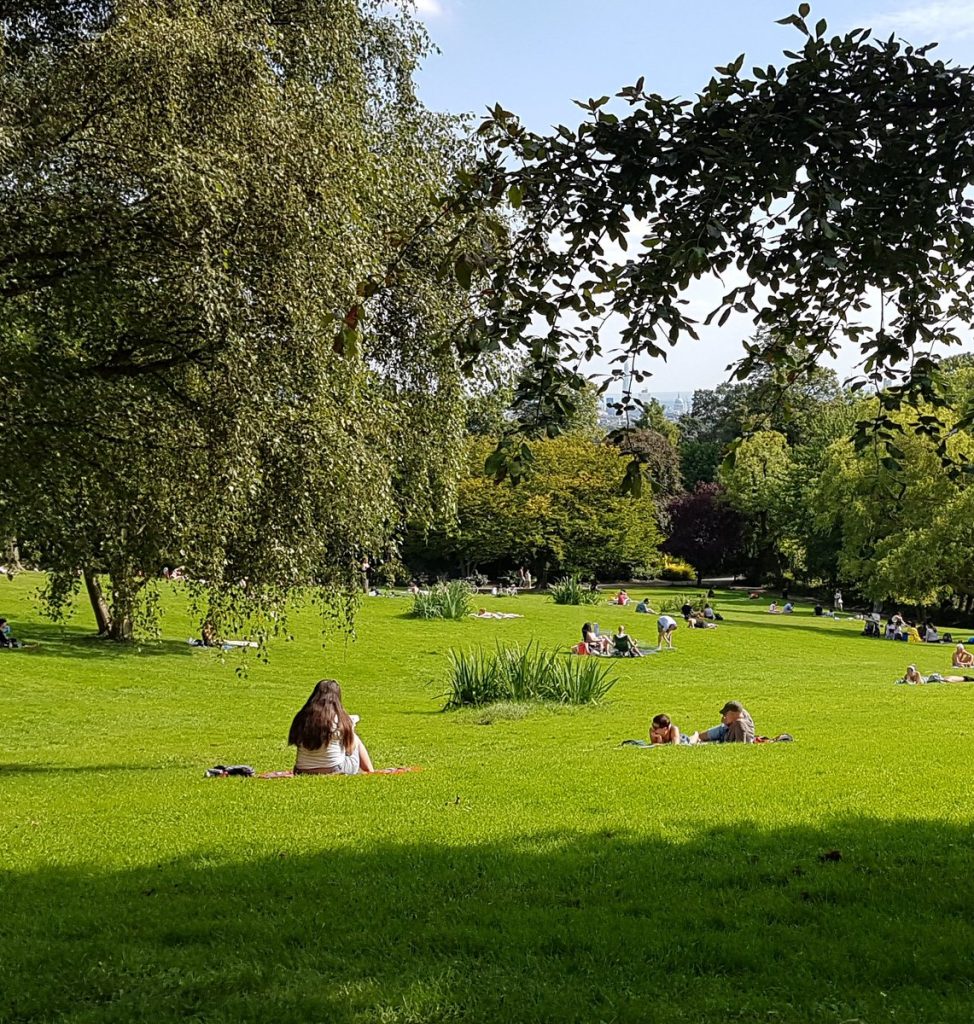Space, peace and quiet are luxuries if you live in a city, and anywhere if resources are tight. But while we all need to get away from time to time, I’m resistant to the idea that tranquility has to be separate from rather than integral to urban life. Designed right, a city can offer places for rest and reflection as well as activity. These places can also engender civic pride and place attachment, so have a social as well as individual benefit.
Previously, I blogged about ‘sense of place’ and the five ways to wellbeing: connect, be active, take notice, learn, give. A lot of the time, I’m focused on the interaction between the first two, whether developing projects which help foster social interaction or in my new role as a trustee of the ‘active travel’ charity Sustrans. But recently I have been thinking more about ‘connect’ as it relates to ‘take notice’ and ‘learn’ – and hence also to ‘place attachment’ and good mental health. What role might there be for local government in fostering these?
We know that place attachment is associated with experiences, often of the natural environment and additionally of heritage and culture. Sometimes these come together, notably in the many fine public parks established by 19th century philanthropists and municipal government, whether it’s Waterlow Park‘s ‘garden for the gardenless’ in Highgate, London, where you will also find Lauderdale House, or the rather grander Sefton Park in Liverpool with its palm house, statues and monuments. The 1875 Public Health Act explicitly ‘allowed’ the building of libraries, galleries and conservatories within parks. A clear recognition that the natural environment and culture are both social goods, linked by their contribution to the wellbeing of citizens.
Libraries remain a statutory local authority service, whereas parks are not. Despite this difference, both are widely viewed as essential services and ascribed a high social value by local communities. Their buildings and structures remain markers of civic pride and icons of a place’s heritage. In 21st century ‘austerity’ Britain, however, there is a significant mismatch between this public view of the worth of parks, libraries and local museums and the budgets they are afforded. As a result, they are all looking to new forms of community asset management and often rely on volunteers to run and maintain them. They are also finding increasingly sophisticated ways to evidence their instrumental value to health and economy, generally motivated by the hope that this will attract additional funding. The growing interest in natural capital accounting is one manifestation of this, or see the APPG on Arts, Health and Wellbeing’s comprehensive report Creative health published last year.
In practice, this mostly means demonstrating footfall and, mostly, this means an increase in ‘activity’ in the form of events. I’m not against this, as such. I have been to a dance performance in a library and I even braved a participative art experience in my local park a couple of years ago. But there’s also a growing interest in the quieter ways to enjoy our shared spaces and heritage, connecting us through appreciation of the built, cultural and natural environment which offers both backdrop to and respite from our busy lives. I’m thinking, for example, of Tranquil City’s Tranquil pavement London interactive map, the Silent space project partnering with parks and gardens to designate quiet times and places, or Paul Wood‘s urban street tree guides. Libraries also are reclaiming their role in providing quiet spaces in the community, whether for the sheer pleasure of reading or for children to be able to do their homework undisturbed.
I am discussing these ideas with Arts Council England and public health and cultural sector colleagues in local government and the voluntary sector across the country. We want to explore further how, together, we can do more to engender a ‘sense of place’ which blends the civic and social with the equally important benefits of peace and quiet for good mental health. All thoughts and suggestions welcome.



